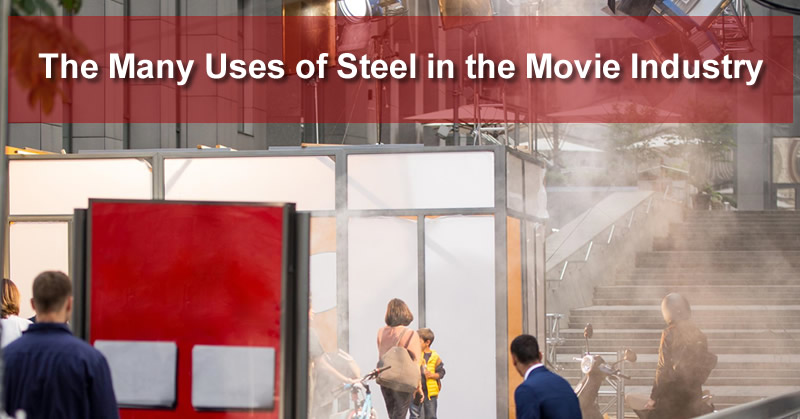The Many Uses of Steel in the Movie Industry
The Many Uses of Steel in the Movie Industry
Yes, you need great acting; yes, you need the artistic vision of directors, cinematographers, set designers, and costumers; yes, you need the hard work of lighting engineers, camera operators, sound people, and more. But let’s imagine for a moment a film industry without steel. Who doesn’t know that iconic moment when Kate Winslett stands on the bow of the Titanic, arms spread, wind whipping her hair, and announces, “I’m flying!” Without steel . . . sploosh, bye-bye Rose.
The 90% scale replica of the Titanic used in the film was built largely from steel, from the rails on which Winslett precariously perched to the frame of the entire vessel. In fact, steel has become such a vital part of the movie industry that it would be hard to imagine an area of the big screen unaffected by its loss.
Let’s start with the obvious. Think of those grand sweeping establishing shots that take in a city scape. Without steel, some of the most iconic backdrops couldn’t exist. Take La La Land, for example, where the Griffith Observatory became emblematic of the most important scenes in the film. This gorgeous tri-domed building perched above Los Angeles was built in 1935 from steel framing wrapped in copper sheathing. No steel, say goodbye to Nakatomi Plaza of Diehard, the Burj Khalifa of Mission Impossible 4, even Ryan Gosling’s Skyline Residence in Crazy Stupid Love.
But steel isn’t just part of the large-scale scenery of film. Parasite, the outstanding Korean film that garnered four awards from the 92nd Oscars, features a haunting black and white image of the forest that takes up much of a wall in the Park family living-room. This stunning piece of art was created by Seung-Mo Park out of 11 layers of stainless steel wires. On a slightly larger scale is the giant atoll of the 1995 action hit Waterworld (starring Kevin Costner). The quarter-mile round structure caused a shortage of steel in Hawaii, where the film was shot, and is reported to have cost in the tens of millions.
But we’re not done with steel. Did you ever think that some of the silver screen’s most memorable characters might be steel? If not, think again, because one of the most terrifying characters for those who avoided beaches for years was the giant man-eating great shark of Jaws. And, yes, the mechanized shark was made of a tubular steel frame covered in polyurethane skin. And while we’re talking steel and characters, let’s add the queen alien from Aliens, the original Terminator, and dinosaurs from Jurassic Park to the list.
Finally, on our tour of steel and the movies, let’s pay homage to steel’s role behind the scenes where steel is used in the many of the props; where it creates the riggings for stunts and camera shots; where it lays the tracks on which cameras run for those follow shots. Steel acts as scaffolds holding up sets, as framework for lighting and sound, as cranes that give us spectacular overheads. Camera and lighting equipment are made from steel. Let’s face it, when it comes to indispensable movie-making material, this stuff may steel the show (ahem)!
–
Ivan Young is a writer from Happy Writers, Co.




